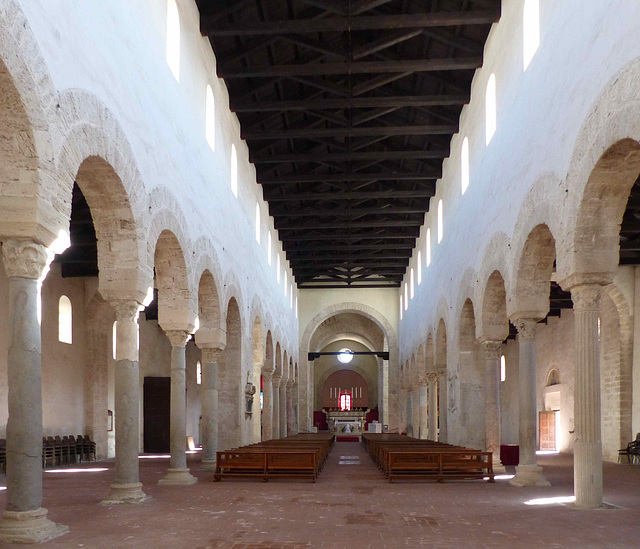Gerace - Duomo di Gerace
Gerace - Duomo di Gerace
Gerace - San Giovannello
Gerace - San Giovannello
Gerace - San Francesco d'Assisi
Gerace - San Francesco d'Assisi
Gerace - San Francesco d'Assisi
Gerace - Maria del Mastro
Gerace - Maria del Mastro
Reggio Calabria - Duomo di Reggio
Münster - LWL-Museum
Münster - LWL-Museum
Reggio Calabria - Monumento ai Caduti di Reggio Ca…
Reggio Calabria - Museo Archeologico Nazionale Di…
Reggio Calabria - Museo Archeologico Nazionale Di…
Reggio Calabria - Museo Archeologico Nazionale Di…
Reggio Calabria - Museo Archeologico Nazionale Di…
Reggio Calabria - Museo Archeologico Nazionale Di…
Reggio Calabria - Museo Archeologico Nazionale Di…
Reggio Calabria - Museo Archeologico Nazionale Di…
Reggio Calabria - Museo Archeologico Nazionale Di…
Reggio Calabria - Museo Archeologico Nazionale Di…
Reggio Calabria - Museo Archeologico Nazionale Di…
Gerace - Duomo di Gerace
Bivongi - Monastero di San Giovanni Theristis
Bivongi - Monastero di San Giovanni Theristis
Bivongi - Monastero di San Giovanni Theristis
Bivongi - Monastero di San Giovanni Theristis
Stilo - San Domenico
Stilo - San Francesco
Stilo - Cattolica di Stilo
Stilo - Cattolica di Stilo
Stilo - Cattolica di Stilo
Stilo - Cattolica di Stilo
Stilo - Cattolica di Stilo
Stilo - Cattolica di Stilo
Stilo - Cattolica di Stilo
Stilo
Capo Colonna
Santuario di Santa Maria di Capo Colonna
Tavole Palatine
Craco
Craco
Badlands
Altamura - Cattedrale di Santa Maria Assunta
Location
Keywords
Authorizations, license
-
Visible by: Everyone -
All rights reserved
-
26 visits
Gerace - Duomo di Gerace


The history of Gerace is closely linked to that of Locri at the coast, as the inhabitants abandoned Locri and fled from a Saracen attack and piratical dangers. They settled inland, where is Gerace now.
The Locrian diocese was moved to Gerace and the innumerable presence of churches and monasteries helped to identify the fortress as a kind of Holy Mount. Because of its particular position, however, Gerace soon became a center of exceptional importance. The possibility of controlling coastal traffic, and the natural fortification, meant that it became the object of attention of the Byzantine Empire and the Kingdom of Sicily. In 986 the Saracens briefly conquered the city, but it returned to Byzantine control until the Norman conquest in 1059. Gerace was the seat of a principality under the Normans.
The "basilica concattedrale di Santa Maria Assunta di Gerace" is one of the largest sacred buildings in the region. The construction was started in the Norman period, with a projecting transept that reflects the Norman customs. The church was consecrated for worship in 1045. In the Swabian period, in 1222, a second consecration took place.
The building was hit by several earthquakes over the centuries, which led to a number of significant changes.
The interior of the basilical church has three large naves, which make up the longest arm of a Latin cross. They are separated by two rows of ten columns, made of polychrome marble and granite, all varying in quality and size. The columns come from the villas of the marina of ancient Pagliopoli/Locri, while the capitals are partly ancient and partly remade.
The Locrian diocese was moved to Gerace and the innumerable presence of churches and monasteries helped to identify the fortress as a kind of Holy Mount. Because of its particular position, however, Gerace soon became a center of exceptional importance. The possibility of controlling coastal traffic, and the natural fortification, meant that it became the object of attention of the Byzantine Empire and the Kingdom of Sicily. In 986 the Saracens briefly conquered the city, but it returned to Byzantine control until the Norman conquest in 1059. Gerace was the seat of a principality under the Normans.
The "basilica concattedrale di Santa Maria Assunta di Gerace" is one of the largest sacred buildings in the region. The construction was started in the Norman period, with a projecting transept that reflects the Norman customs. The church was consecrated for worship in 1045. In the Swabian period, in 1222, a second consecration took place.
The building was hit by several earthquakes over the centuries, which led to a number of significant changes.
The interior of the basilical church has three large naves, which make up the longest arm of a Latin cross. They are separated by two rows of ten columns, made of polychrome marble and granite, all varying in quality and size. The columns come from the villas of the marina of ancient Pagliopoli/Locri, while the capitals are partly ancient and partly remade.
Nouchetdu38, Marco F. Delminho have particularly liked this photo
- Keyboard shortcuts:
Jump to top
RSS feed- Latest comments - Subscribe to the comment feeds of this photo
- ipernity © 2007-2024
- Help & Contact
|
Club news
|
About ipernity
|
History |
ipernity Club & Prices |
Guide of good conduct
Donate | Group guidelines | Privacy policy | Terms of use | Statutes | In memoria -
Facebook
Twitter

Sign-in to write a comment.